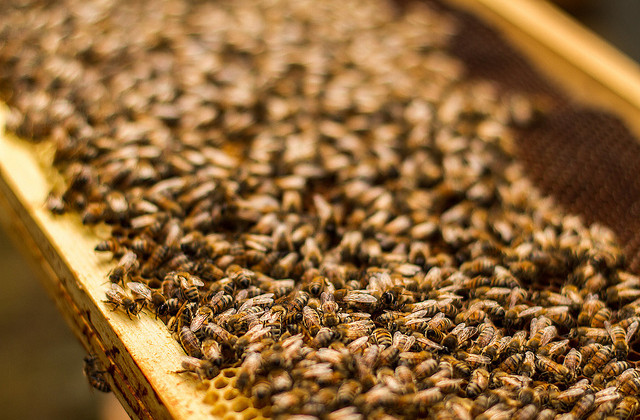Environmental News – March 24 – 31, 2013
Popular Insecticides May be Killing Bees, Green Walls Reduce Air Contaminants, Arctic Ice Reduction Linked to Extreme Weather, Extinct Species Revival, and Lead Based Paint all in this week’s Environmental News
Popular Insecticides a Threat to Bees?
Popular pesticides called neonicotinoids or neonics have been linked to massive bee-kills in the Midwest. Neonics are used in a dust form and often buried with the seed. Yet the exhaust from the planters spreads the dust to nearby flowers, leading to the bee die-offs. These die-offs are believed to occur both instantly and over-time depending on the type of exposure. Bayer CropScience, the largest seller of the insecticide, is currently developing a waxy substitute that won’t spread as easily.
Green Walls Cut Pollution in Urban Areas.
Scientists in Germany have created a computer model based on a green wall located in a Western European City. In addition to the other well-known benefits, the simulation revealed that green walls absorb large amounts of both Nitrogen Dioxide and particulate matter in what are called “street canyons”, or the space between two tall buildings. This study could help governments make implementations to improve air quality especially in large urban hotspots in ways other than simply reducing emissions.
Scientists: Icy Spring linked to Dramatic Loss of Ice
Scientists have linked the exposure of large parts of the ocean to the extreme weather being experienced in Europe and North America. According to the National Snow and Ice Data Centre (NSIDC) there has been a dramatic loss of Arctic sea ice, which fell to almost “the minimum recorded for this time of year”. Thus the lack of existing ice enables the cold Arctic air to flow further south for longer periods of time.
Extinct Species Revival and the “New Hybrid”
Synthetic Biologists and de-extinction scientists are blurring the defining lines “species”. While evolution makes precise changes over time based on survival, humanity’s hand is far less refined. Methods such as cloning and genetic engineering are utilized in an effort to improve or salvage a species for survival. If species revival or de-extinction is to be successful other species will have to be integrated, whether physically or behaviorally, resulting in hybrid “species”.
Lead Based Paint found on the Shelves in Developing Nations
Lead was commonly utilized in paint to decrease drying time, while since banned in the U.S. and other Western Countries due to the toxic health effects, it was discovered on the shelves of many developing countries during a recent study. In some cases levels of the heavy metal were determined to “exceed the US standard by 300 times or more.” Additionally, one of the producers of the lead-based paint was found to be a subsidiary of the world’s “second largest” paint producer, headquartered in the U.S.


